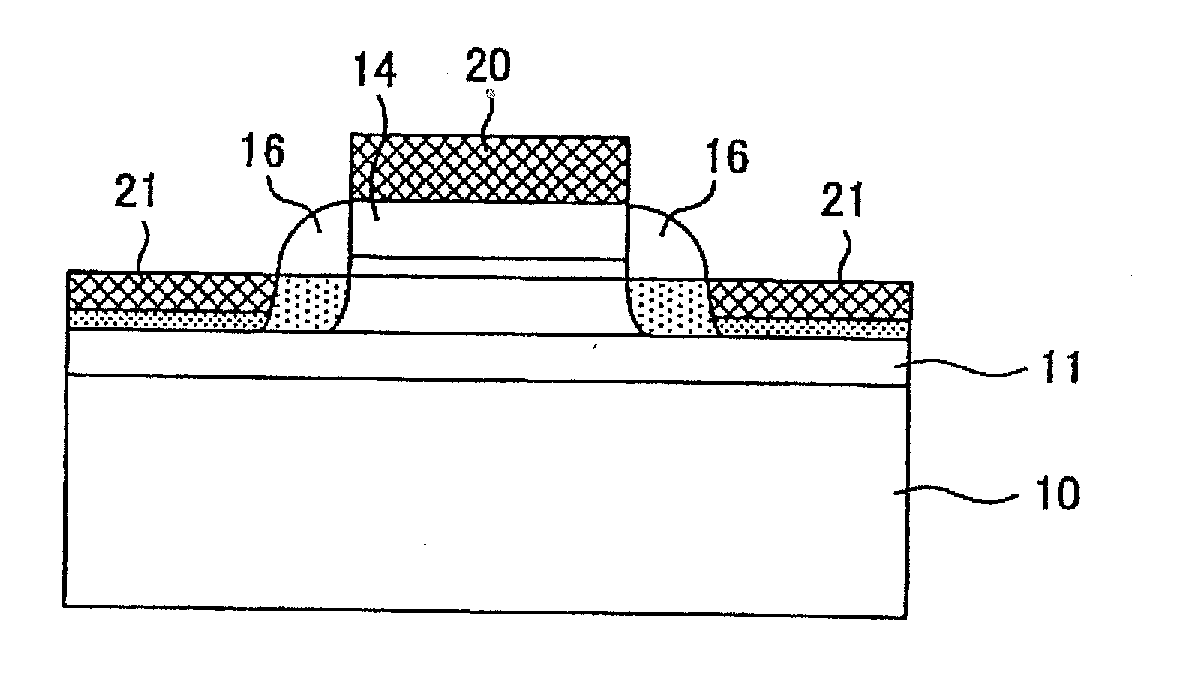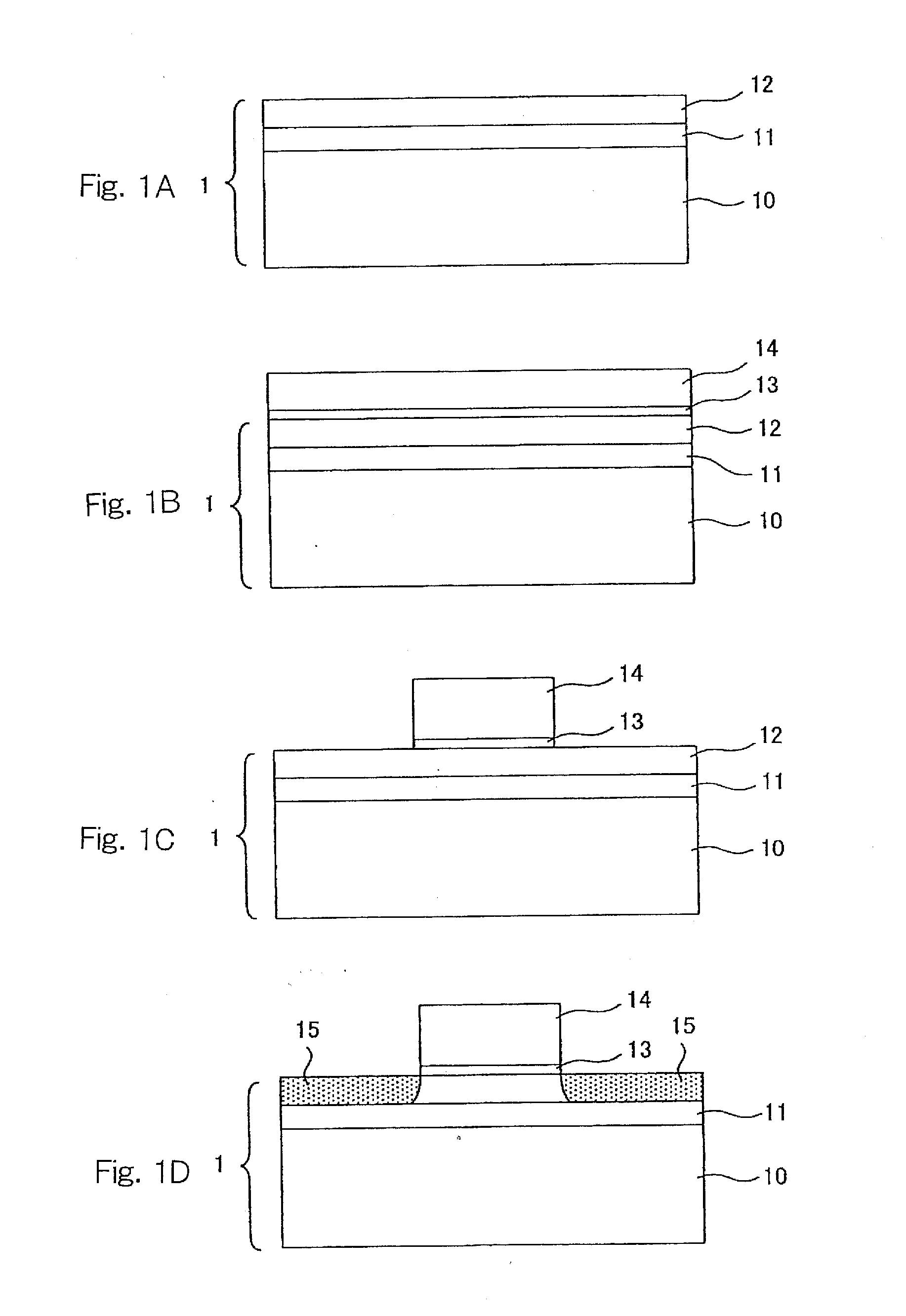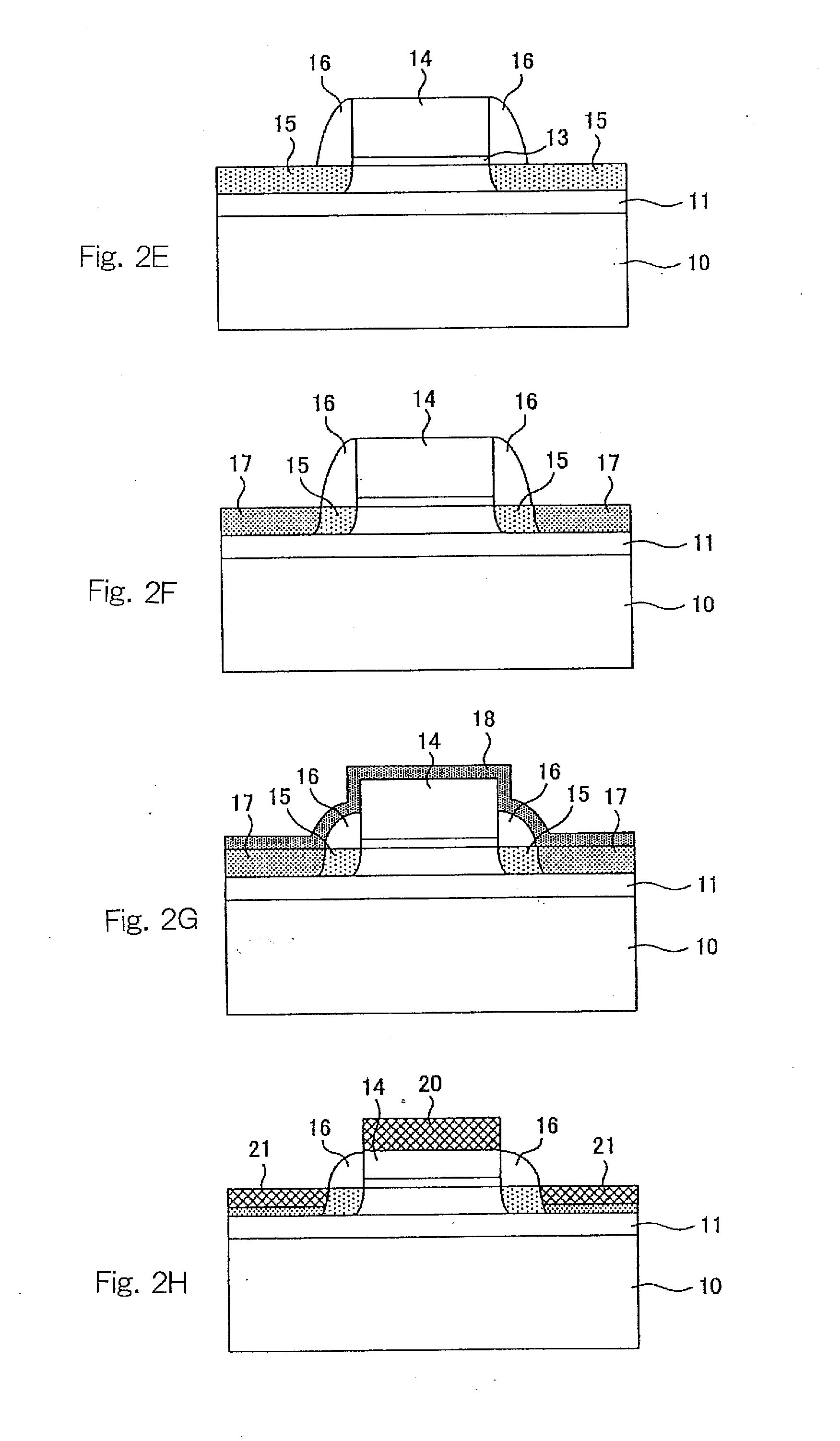Method of manufacturing semiconductor device
a manufacturing method and semiconductor technology, applied in the direction of semiconductor devices, basic electric elements, electrical equipment, etc., can solve the problems of insufficient performance, increased leak current, and difficulty in implementing techniques, so as to reduce parasitic resistance, increase leak current, and promote the effect of silicacidation reaction
- Summary
- Abstract
- Description
- Claims
- Application Information
AI Technical Summary
Benefits of technology
Problems solved by technology
Method used
Image
Examples
first embodiment
[0017]FIGS. 1A to 1D and FIGS. 2E to 2H are cross-sectional diagrams for the process steps respectively of an SOI-MOSFET manufacture process according to a first embodiment of the present invention.
[0018]First, an SOI substrate 1 constituted by a silicon substrate 10, a BOX layer 11, and a semiconductor layer (SOI layer) 12 laid one over another is prepared. The SOI substrate 1 may be made by any method such as a UNIBOND method (registered trademark), a sticking method, a SIMOX (Silicon Implanted Oxide) method, or the like. In the UNIBOND method, after an oxide film is formed over a surface of a wafer, a high concentration of hydrogen ions are implanted, and another wafer having been stuck to the wafer, the implanted wafer is split (SmartCut) along the hydrogen-ion implanted layer by a thermal process, thereby forming the SOI substrate. In the SIMOX method, a high concentration (e.g., 1E18 cm−2) of oxygen O2 with high energy (e.g., 180 KeV) is ion-implanted into a prime wafer surfac...
second embodiment
[0029]Next, the manufacturing method of MOSFETs using the SOI substrate according to a second embodiment of the present invention will be described with reference to FIGS. 3A to 3C and FIGS. 4D to 4E. The manufacturing method of the present embodiment is the same in the process until the step of forming the poly-silicon film constituting the gate electrodes 14 over the SOI substrate 1 as in the above first embodiment, and description thereof is omitted. Thus, FIGS. 3A to 3C and FIGS. 4D to 4E show the process steps after the poly-silicon film 14 is formed.
[0030]After the SiO2 film 13 constituting a gate oxide film and the poly-silicon film 14 constituting gate electrodes are formed over the SOI substrate 1, a plurality of grooves, e.g., about 0.2 μm wide and about 0.1 μm deep are formed at about 0.2 μm intervals in the gate electrode 14 by photolithography and dry etching. With the plurality of grooves, the surface area of the top of the gate electrode 14 becomes about 1.5 times lar...
third embodiment
[0038]Next, the manufacturing method of MOSFETs using the SOI substrate according to a third embodiment of the present invention will be described with reference to FIGS. 5A to 5C and FIGS. 6D to 6E.
[0039]First, a SiO2 film 13 of about 100 Å thickness constituting a gate oxide film is formed over the semiconductor layer (SOI layer) 12 by the thermal oxidation process. Then, a first poly-silicon film 14a constituting the lower layer of gate electrodes 14 is formed over the SiO2 film 13 by the LP-CVD method or the like. The first poly-silicon film ˜14a is formed by a method usually performed when forming gate electrodes, for example, a reduced-pressure CVD method under process conditions of a reaction temperature of 620° C. and a pressure of 0.2 Torr using silane gas (SiH4). Subsequently, a second poly-silicon film 14b having multiple bumps and hollows on its surface, i.e., having a rough surface is formed over the first poly-silicon film 14a. The second poly-silicon film 14b is const...
PUM
 Login to View More
Login to View More Abstract
Description
Claims
Application Information
 Login to View More
Login to View More - R&D
- Intellectual Property
- Life Sciences
- Materials
- Tech Scout
- Unparalleled Data Quality
- Higher Quality Content
- 60% Fewer Hallucinations
Browse by: Latest US Patents, China's latest patents, Technical Efficacy Thesaurus, Application Domain, Technology Topic, Popular Technical Reports.
© 2025 PatSnap. All rights reserved.Legal|Privacy policy|Modern Slavery Act Transparency Statement|Sitemap|About US| Contact US: help@patsnap.com



